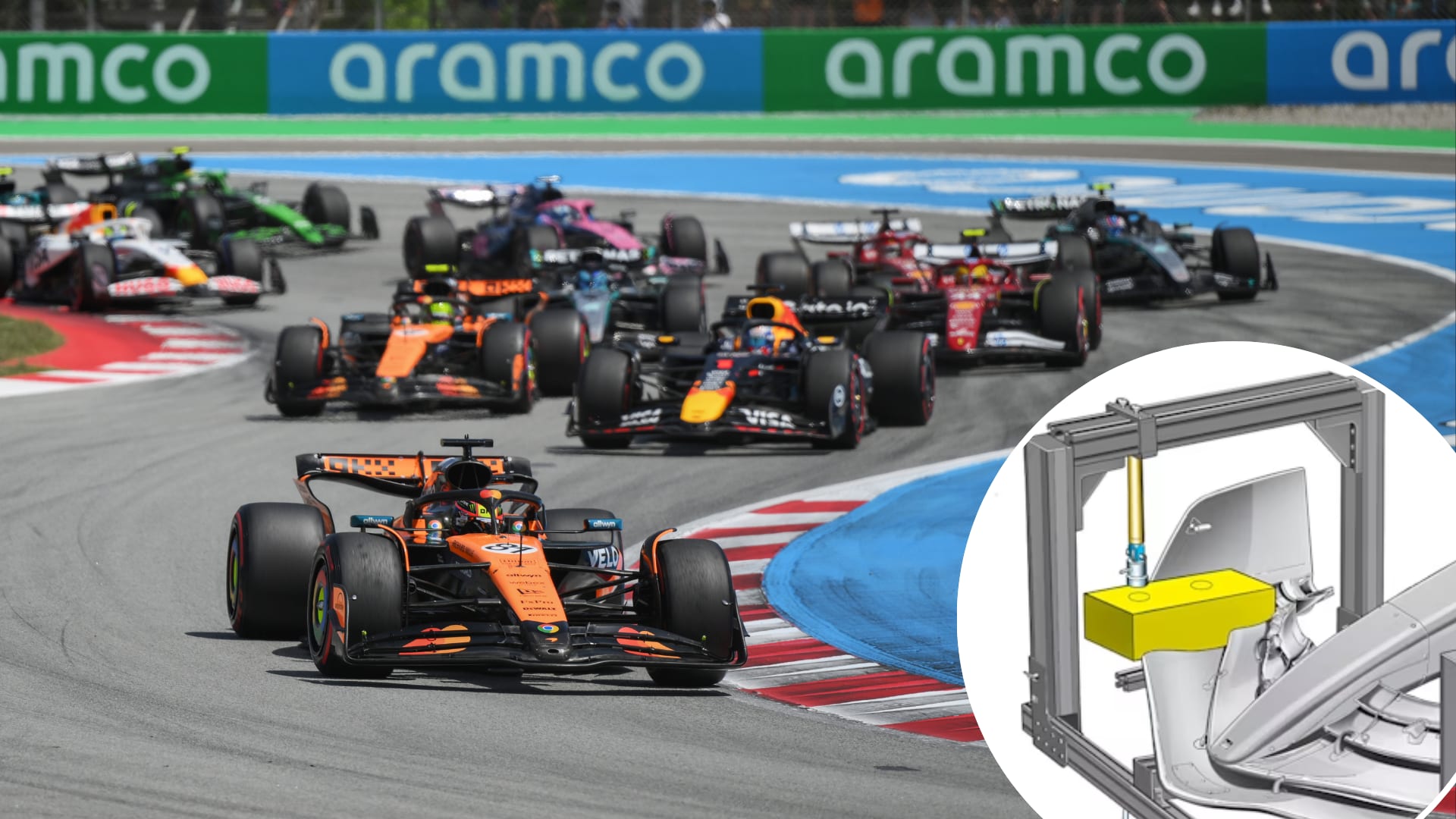
Feature
A closer look at how strategy and cornering speeds played their part in the dramatic Silverstone finale

Share

The dramatic ending to the British Grand Prix was very much tyre-related, the last three laps seeing three sudden deflations of the left-front. Lewis Hamilton completed most of his last lap with just three inflated tyres, hanging on to win from a fast-closing Max Verstappen on fresh rubber.
Just two laps prior to that, Valtteri Bottas had lost his second place with an identical problem. In the lap between the Mercedes failures, Carlos Sainz lost fourth place when his McLaren’s tyre surrendered in the same way.
WATCH HIGHLIGHTS: Watch all the action as Hamilton survives late drama to win British GP
Pirelli are still investigating the exact cause of the failures, but the suspicion is that it was caused by a combination of higher-than-expected wear rates and damage from debris left on the track by Kimi Raikkonen’s collapsing front wing, late in the race, when the tyres were very thin and susceptible to such damage.
So, why was the wear so high? And why did that make them susceptible?
Great Britain 2020: Tyre drama sparks remarkable Silverstone finish
These questions need to be answered against the backdrop of every team going into the race intending to one-stop. Last year, with the same tyres, one-stop only became feasible as the race unfolded, allowing the expected two-stop to be changed to the faster one.
One-stopping implies long stints – this around a Silverstone circuit of very high-speed, long-duration corners which take more energy from the tyres than any other track on the calendar. It’s already hugely demanding of the left-front tyre.
Watch and listen to Hamilton ‘fight for survival’ on last lap of British GP
Extending the stint lengths by opting to one-stop is only going to make that demand more critical. Furthermore, the Lap 13 Safety Car caused by Daniil Kvyat’s accident brought everyone in around 10 laps earlier than planned, so extending the second stint length even further.
The loads on a tyre are a function of the car’s weight and its cornering speed. But the increase in load is not linear with speed. Rather, it squares. This year’s Mercedes was an average of around 10km/h quicker than last year’s at the apex of the fast corners. That’s a lot more load. There are implications for the structural requirements of the tyre and the wear.
Raikkonen's front wing comes loose at Becketts - was this the moment that tyre-wrecking debris was scattered?
At the time of writing, structural failure was not suspected. But the wear rate was certainly higher than forecast. The first hint of this came as Romain Grosjean – who had stayed out during the safety car as everyone else pitted – brought his medium-tyred Haas in after 36 laps with zero tread remaining. Grosjean actually felt the tyre ‘die’ on his in-lap.
Others were beginning to feel vibrations from the left-front with around 10 laps still to go and were backing off in response.
That would probably have been enough to have got everyone safely to the end. But four laps from home, Raikkonen’s wing – which had earlier been damaged and weakened – failed completely through Maggotts and Becketts. This seems to have left carbon fibre shards scattered across the track.
When Red Bull brought Max Verstappen in to switch to a set of soft tyres with which to try for the fastest lap point, they noted that the old tyres which came off were ‘covered with about 50 cuts’. That was clear evidence of debris damage, though in this case it wasn’t enough to deflate the tyre.

The aftermath: Hamilton looks at his mangled tyre after winning the British GP
But in the case of Bottas, Sainz and Hamilton, it was. The failures look to have happened around the outer shoulder area. When the tread wears, this is the vulnerable area. Especially when the pressures are high. For Silverstone they were very high, with a Pirelli-stipulated minimum of 25psi for the front (21 rear).
This is around 4psi higher than at somewhere like the Red Bull Ring. Lower pressures would allow greater grip but thereby feed greater loads into the carcass of the tyre. The higher the corner speeds, the higher Pirelli tends to set the minimum pressure in order to keep the tyre’s structure safe. But this has the effect of bulging the tread out.
So in summary, the deflations look likely to have been the result of the worst combination of increased cornering loads from this year’s cars on a tyre with a high minimum pressure and long stint lengths.
The long stint lengths required for a one-stop were only made possible by how well the tyres were retaining their performance even as they wore. But it obviously took them much closer to the wear limit. That and the combination of the high pressures gave them a particular vulnerability to debris damage late in the race – and debris was indeed dropped late in the race.
YOU MIGHT ALSO LIKE
FeatureF1 Unlocked MONDAY MORNING DEBRIEF: Verstappen made contact with Russell and Leclerc – but why were they racing each other in the first place?
News ‘Aggressive’ Alonso scores first points of the season at ‘special’ home race
News Albon rues ‘messy race' as Sainz says 'nothing went our way' in Spain as Williams fail to score for first time since Bahrain
News Stella hails Piastri’s progress after 1-2 in Spain as he explains ‘risk’ posed by McLaren’s strategy




